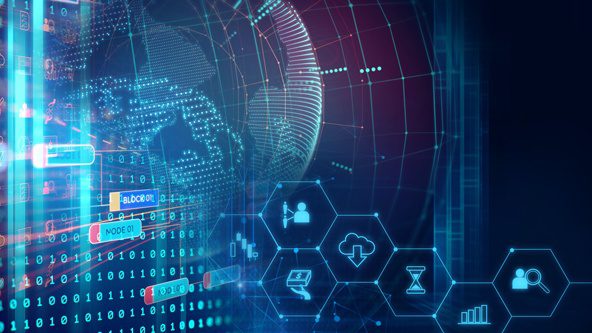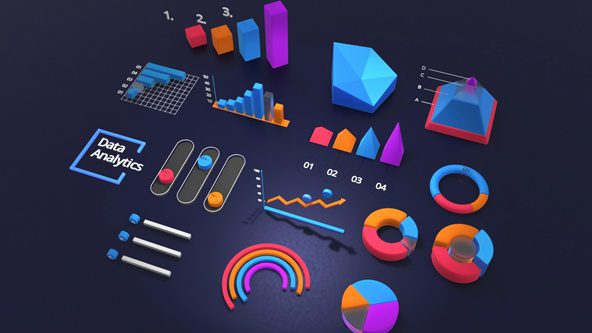AI and Technology
HRD Briefing 2022: The Digital Value Era

The Future of Digital Recombination
Digital transformation is a significant challenge for organisations, with the top two challenges being the digitalisation of internal operations and the business model. It would have been challenging to predict precisely how disruptive for most office work the pandemic would be. As it turned out, the technicalities of virtualising information work proved relatively easy to resolve, even if the long-term viability of such arrangements is unclear. Being together physically at work can be critical when seeking breakthrough decisions and has a significant positive impact on social and psychological wellbeing. Many now hope for a future of work with the best of both worlds – a better work/life balance, working together in the same place when it makes a difference, and less reliance on means of commuting and global transportation adding to global warming. At the London School of Economics, the change was technically smooth due to the readily available digital platforms and infrastructures but also required investment and considerable effort.
The strength of the current Digital Platform Era is precisely the increasingly ready availability of the foundations for the constant wave of digital transformation. However, the subsequent waves of digital challenges cannot be met by individual single-firm controlled digital platforms alone. The global digital mega-platforms do not collaborate, and future digital transformations require precisely this.
The Digital Platform Era
As the open Internet only knows about data packages, digital platforms serve the purpose of trustworthy mediators of matchmaking between different sides in multi-sided markets to exchange digital content, goods, and services – for example, people needing a ride and Uber drivers needing jobs. The digital platforms also streamline matchmaking through a centralised, searchable index. As a result, the platform facilitates novel kinds of service relationships and gets access to and controls all the resulting transactional data.
The dynamics of these digitally enabled multi-sided markets have rapidly created winners and losers, resulting in highly centralised market power, especially over the increasingly intimate personal data. Therefore, it is not strange that many organisations look to the global platform leaders, such as Google, Amazon, Microsoft, Apple, Tencent, and Alibaba, for inspiration on achieving similar advantages by becoming a digital platform.
However, this centralised wholesale hoarding of data and creation of hidden algorithmic nudging of our behaviour has come to the fore of the public debate. While it may seem impossible to live without the services provided through this harvesting of private and increasingly intimate data, the public and political debate is becoming increasingly hostile towards these business practices. Not only do we need new ways of addressing such challenges, but we are also facing five major categories of technologies that further exacerbate the need to address the challenges (discussed below). Rather than approaching this issue from an ethical or moral perspective, a more constructive perspective would be to consider privacy as the next barrier to significant leaps in digital services innovation. Do we wish every step we take in our shoes and every ride in a self-driving car to be subjected to commercial scrutiny? To nudge us to make further purchases or decide what route we take based on what is most profitable for the central platform?
Five Near-Future Technology Categories
As the digital transformation of organisational activities increasingly can be explained in the recombination of readily available essential technologies and services, the following outline five categories of emerging technologies, further discussed in a recent report on digital disruption. In combination, these can provide new operating models and critically break through the current limitations of singular, powerful digital platforms.
- IoT: 5G telecommunications and the Internet of Things connected through this infrastructure. This category of technology enables digital connections beyond mobile phones — all matters of physical devices, machinery, and fixed installations.
- AI: Artificial intelligence supporting the automatic detection of patterns and the resulting creation of new algorithmic behaviours.
- Autonomy: Various forms of autonomy allowing self-guided vehicles, drones, and robots to traverse geographies and buildings without precise pre-determined maps but instead by plotting a viable path by navigating environmental data.
- Hybridity: Extensive mapping of the digital and the physical, for example, through digital twins. A digital representation can enable highly flexible representations and adjustments of physical goods. Lego has used this for several years in their augment reality catalogues.
- Blockchain: This category of technology supports peer-based exchanges of scarce digital objects, such as digital money, certificates, deeds, without the need for a central platform company gaining exclusive ownership of the transaction. TradeLens supports container supply-chain companies managing critical documents more effectively with a blockchain as the collaborating organisations agree on collectively verifying who is currently in possession of what valuable shipping document.
The Digital Value Era
A centralised digital platform approach will constitute a barrier to innovation when considering the next wave of essential technologies and their possible combinations into breakthrough digital transformations. It would require collaborating organisations to relinquish all control over transaction data to one controlling organisation. The significant complexity in the virtual-physical interrelationships across the five categories above will unlikely be mastered by one organisation. This implies a competitive premium on firms collaborating in consortia to leverage these five types of essential technologies to shape new business models. This will represent a Digital Value Era of collectively agreed decentralised peer-to-peer exchange of scarce digital objects. There is here no necessity of a central platform firm acting as a matchmaker. Smart contracts, can, for example, govern inter-organisational exchanges. A musician will, for example, be able to flexibly track the use of a song and automatically get royalty payments when someone decides to use it, depending on how it is used.
The Digital Value Era will support flexible business models involving multiple organisations that up-front decide the principles for how they will conduct exchanges and what data will be available to all. Consider it a modern-day cooperative movement enabled by digital technologies.
Experiment to Innovate!
The challenge of recombining the five basic technologies above with all the existing ones implies skills of critically questioning the current arrangements, understanding the needs of consumers and partner organisations, and importantly, envisioning inter-organisational structures that stitch together new services across existing organisational boundaries.
While it is relatively easy to predict that the five general technologies listed above will play an essential role in the coming decade, it is challenging to predict how the technologies will be recombined into new value-creating intra- and inter-organisational systems. There is little doubt that digital transformation will shift beyond the simple replication of existing arrangements. The focus will be on continual innovation-based transformation of new products and services, requiring new partner connections. To foster such innovation in a context of uncertainty, organisations will need to embrace agile innovation at the core of their operations and apply critical and entrepreneurial questioning of present arrangements.
The future for all organisations will increasingly be built using entirely new kinds of digital elements weaving the virtual and the physical together in new ways. The future is not predicted, it is created, and the only way to join is to keep experimenting – all the best of luck with your journey into the Digital Value Era.
This article formed part of the HR Directors’ Briefing: Scanning the Horizon: Trends and Issues in 2022. View the full Briefing here.




